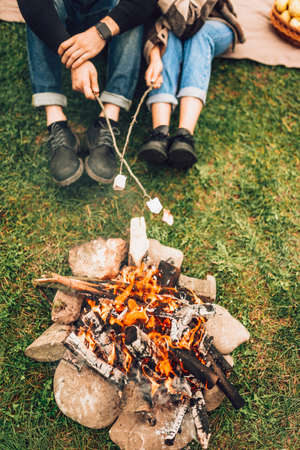Understanding Ethical Wildlife Interaction
When youre out exploring the great outdoors—whether its hiking through a national park, camping under the stars, or kayaking along a quiet river—chances are youll come across some form of wildlife. These encounters can be magical, but its important to approach them with care and respect. Ethical wildlife interaction is all about enjoying these moments while making sure we dont harm animals or their habitats in the process.
What Does Ethical Wildlife Interaction Mean?
Ethical wildlife interaction means observing animals in a way that prioritizes their well-being over our curiosity. It involves understanding that were guests in their natural homes and should act accordingly. This mindset is especially important for outdoor recreation enthusiasts who often find themselves in close proximity to nature.
Key Principles of Ethical Wildlife Interaction
Here are some basic guidelines to follow when encountering wildlife during your outdoor adventures:
| Principle | What It Means |
|---|---|
| Respect Animal Habitats | Stay on trails and avoid disturbing nests, dens, or feeding areas. |
| Minimize Human Impact | Keep noise levels low, avoid feeding animals, and pack out all trash. |
| Observe from a Distance | Use binoculars or zoom lenses instead of getting close for a better view. |
| No Hands-On Engagement | Avoid touching, handling, or attempting to “rescue” wildlife unless youre trained and authorized to do so. |
Why Observation Beats Interaction
While it might be tempting to snap a selfie with a deer or try to pet a squirrel, these actions can stress animals out and even change their behavior over time. Wild animals need to stay wild—for their safety and ours. Observing them quietly allows them to go about their lives naturally and lets you enjoy more authentic encounters.
The Role of Citizen Science and Conservation Volunteering
If you’re passionate about wildlife and want to do more than just watch from afar, consider joining citizen science projects or volunteering for conservation programs. These efforts often involve tracking animal movements, monitoring habitats, or collecting environmental data—all without disturbing the animals themselves. Its a great way to contribute meaningfully while still respecting ethical boundaries.
Quick Tips for Responsible Wildlife Watching
- Keep at least 100 yards away from bears and wolves; 25 yards from other wildlife like elk or bison.
- Avoid using flash photography—it can startle animals.
- If an animal changes its behavior because of your presence, youre too close.
- Teach kids about respecting animals and model good behavior during outdoor activities.
By following these practices, we help protect the very creatures that make our outdoor experiences so special. Whether youre birdwatching in your backyard or spotting moose in the Rockies, ethical interaction ensures both people and wildlife thrive together.
The Role of Citizen Science in Wildlife Conservation
Citizen science is a powerful way for everyday outdoor enthusiasts to get involved in wildlife conservation. Whether youre hiking, camping, or simply enjoying time in nature, your observations and participation can make a real difference. By collecting data, tracking animal sightings, or even snapping photos of plants and insects, you help researchers better understand the natural world and protect it.
What Is Citizen Science?
Citizen science involves public participation in scientific research. In the context of wildlife conservation, it means that anyone—regardless of scientific background—can contribute valuable data to support environmental studies. These efforts help scientists monitor species populations, track migration patterns, and detect changes in ecosystems over time.
How You Can Get Involved
There are many ways to participate in citizen science while enjoying the outdoors. Here are some popular activities you can try during your next camping trip or nature walk:
| Activity | Description | Tools You Might Need |
|---|---|---|
| Birdwatching | Record bird species you see and hear | Binoculars, bird ID app (e.g., Merlin Bird ID) |
| Insect Counting | Monitor butterfly or bee activity in specific areas | Notebook, camera, insect guidebook |
| Plant Monitoring | Track blooming times or invasive plant spread | Smartphone with GPS, plant ID app (e.g., iNaturalist) |
| Mammal Tracking | Look for tracks or scat and log findings | Field guide, camera, GPS device |
| Water Sampling | Collect water samples to test for quality and biodiversity | Sampling kit, gloves, smartphone for data entry |
Popular Platforms to Join
If youre ready to start contributing to real-world science projects, check out these platforms where you can submit your findings:
- iNaturalist: Upload photos of plants and animals to help scientists map biodiversity.
- eBird: Share bird sightings to support avian research globally.
- Zooniverse: Participate in a variety of projects analyzing wildlife images and data.
- Natures Notebook: Track seasonal changes in plants and animals.
The Impact of Your Efforts
Your contributions as a citizen scientist are more than just a hobby—theyre part of a global movement to understand and protect our planet’s wildlife. Every photo you take and every observation you log helps build a clearer picture of how species are doing in the wild. This information supports conservation policies and on-the-ground efforts aimed at preserving natural habitats.
A Fun Way to Make a Difference
You dont need to be a professional biologist to help conserve wildlife. Just by being curious and observant during your outdoor adventures, you become an essential part of the conservation community. So grab your gear, head outside, and know that every little bit counts!

3. Getting Involved with Conservation Volunteering
Volunteering with conservation organizations is a great way to support ethical wildlife interaction while making a real difference in protecting natural habitats. Across the United States, there are many hands-on opportunities that let you contribute to wildlife preservation, whether youre restoring native landscapes, helping injured animals recover, or educating others about local ecosystems.
Why Volunteer for Conservation?
Conservation volunteering gives you the chance to work alongside scientists, land managers, and fellow nature lovers. It’s also a meaningful way to learn more about wildlife behavior and ecology while spending time outdoors. Most importantly, your efforts help ensure future generations can experience thriving natural environments and diverse animal species.
Popular Types of Conservation Volunteering
You don’t need a science degree or years of experience—just a willingness to help. Here are some common types of conservation projects available across the U.S.:
| Type of Volunteering | Description | Typical Activities | Who Can Join |
|---|---|---|---|
| Habitat Restoration | Helps repair damaged ecosystems like forests, wetlands, and prairies. | Planting native species, removing invasive plants, trail maintenance | All ages, families welcome |
| Wildlife Rehabilitation | Supports the care and release of injured or orphaned wild animals. | Feeding animals, cleaning enclosures, assisting veterinary staff | Adults or teens with supervision |
| Beach and River Cleanups | Keeps waterways clean and safe for wildlife and people. | Collecting trash, sorting recyclables, documenting pollution sources | Individuals or groups |
| Citizen Science Projects | Collects data to support scientific research on wildlife. | Bird counts, camera trap monitoring, plant surveys | No experience needed |
Where to Find Volunteer Opportunities
You can find local conservation programs through national parks, wildlife refuges, zoos, and nonprofit organizations. Some well-known groups offering volunteer opportunities include:
- The Nature Conservancy: Offers habitat restoration and educational outreach projects nationwide.
- National Wildlife Federation: Supports citizen science programs and community-based conservation.
- Your Local Audubon Chapter: Great for bird lovers interested in monitoring and habitat protection.
- U.S. Fish & Wildlife Service: Hosts volunteer events at national wildlife refuges across the country.
Tips for First-Time Volunteers
- Start local: Look for opportunities close to home so you can volunteer regularly without needing to travel far.
- Ask questions: Don’t be afraid to reach out to organizations beforehand to learn what’s expected of volunteers.
- Dress appropriately: Wear weather-appropriate clothing and sturdy shoes—you’ll likely be outside!
- Bring friends or family: Many programs welcome group participation and it’s more fun together.
No matter where you live in the U.S., there’s likely a conservation project near you looking for passionate volunteers. Whether youre restoring a wetland or caring for rescued owls at a rehab center, your time and effort make a difference—for both wildlife and your community.
4. Best Practices for Outdoor Enthusiasts
Whether youre camping under the stars, hiking through national parks, or simply enjoying nature in your local area, its important to interact with wildlife responsibly. Ethical wildlife interaction not only protects animals and their habitats but also enhances your outdoor experience. Here are some easy-to-follow tips that align with citizen science and conservation volunteering efforts.
Follow Leave No Trace Principles
The Leave No Trace (LNT) principles are a great starting point for anyone spending time outdoors. These seven guidelines help minimize your impact on nature:
| Principle | Description |
|---|---|
| 1. Plan Ahead and Prepare | Know the regulations and special concerns for the area you’ll visit. |
| 2. Travel and Camp on Durable Surfaces | Stick to established trails and campsites to avoid damaging vegetation. |
| 3. Dispose of Waste Properly | Pack out all trash, leftover food, and litter. Use bathrooms where available. |
| 4. Leave What You Find | Preserve the past and leave natural objects as you found them. |
| 5. Minimize Campfire Impact | Use a camp stove instead of building a fire whenever possible. |
| 6. Respect Wildlife | Observe from a distance, never feed animals, and keep pets under control. |
| 7. Be Considerate of Others | Keep noise levels down and yield to other trail users. |
Respect Local Regulations
Different parks and natural areas have different rules when it comes to wildlife interaction. Always check local guidelines before you go. For example, some areas might prohibit drones due to their potential to disturb nesting birds or limit access during certain seasons to protect mating or migration patterns.
Tips for Staying Compliant:
- Check park websites or visitor centers for up-to-date information.
- Obey signage related to wildlife protection areas.
- If youre unsure about a rule, ask a ranger or volunteer guide.
Practice Responsible Observation
If youre participating in citizen science activities like birdwatching or wildlife tracking, its important to do so without disturbing the animals. Use binoculars or zoom lenses instead of getting close, stay quiet, and avoid blocking an animal’s path or escape route.
Helpful Gear for Ethical Observation:
- Binoculars or a spotting scope
- A field notebook or data collection app (like iNaturalist)
- A red flashlight for night observations (less disruptive than white light)
Join Conservation Volunteering Efforts Responsibly
If youre volunteering with a conservation group, follow their protocols closely. These projects often involve handling sensitive environments or species, so training and supervision are key. Always report any unusual sightings to project leaders rather than acting on your own.
Your Actions Matter
The small choices you make during your outdoor adventures add up. By respecting wildlife, following Leave No Trace principles, and staying informed about local rules, youre helping preserve nature for future generations—and setting a great example for others along the way.
5. Success Stories from the Field
When it comes to ethical wildlife interaction, citizen science and conservation volunteering have proven to be powerful tools for real change. Across the U.S., everyday people are helping protect wildlife through hands-on involvement. Here are some inspiring examples of initiatives that have made a measurable difference.
Sea Turtle Patrols in Florida
Every summer, volunteers along Florida’s coast join local organizations to monitor sea turtle nests. By tracking nesting sites, protecting eggs from predators, and educating beachgoers, these efforts have helped increase hatchling survival rates. The data collected is also used by scientists to understand migration patterns and population health.
Impact Snapshot:
| Year | Nests Protected | Estimated Hatchlings |
|---|---|---|
| 2020 | 1,200+ | 90,000+ |
| 2021 | 1,350+ | 105,000+ |
| 2022 | 1,500+ | 120,000+ |
The Cornell Lab’s FeederWatch Program
This nationwide citizen science project invites bird lovers to observe and report the birds visiting their backyard feeders. The program has led to a better understanding of bird population trends and helped identify species at risk due to climate change or habitat loss.
Volunteer Contribution:
- Over 20,000 participants annually
- Millions of bird sightings submitted each season
- Data used in over 100 scientific studies
Monarch Butterfly Tagging in the Midwest
Volunteers across states like Texas, Kansas, and Illinois help tag Monarch butterflies during their migration. These tags provide crucial information about travel routes and survival rates. The initiative supports habitat restoration and educates communities on pollinator-friendly practices.
Results Over Time:
| Tagging Season | BUTTERFLIES Tagged | Migratory Data Collected |
|---|---|---|
| 2019 | 25,000+ | Robust East-to-Mexico Route Tracked |
| 2020 | 30,000+ | New Stopover Sites Identified |
| 2021 | 35,000+ | Mating & Breeding Patterns Studied |
A Shared Impact Through Community Action
No matter your background or location, there’s a way for you to get involved. These stories show that when people come together with purpose and care for wildlife, the results are both meaningful and measurable. Whether its tagging butterflies or counting birds at your feeder, every small action contributes to a larger movement for conservation.

